Speaker
Description
Grass pollen is one of the major causes of allergy, affecting 10-30% of the population around the globe. About 100 species of grass could be found in the European part of Russia, but the time of flowering and the allergenicity of different grass species are not the same.
The primary source of information on grasses' pollen content in the air is classical aerobiological monitoring, but microscopic pollen analysis does not allow identifying species and even genera within Poaceae because of the stenopalynous nature of the family. A possible solution to this problem could be the metabarcoding approach employing DNA barcodes for taxonomical identification of species in complex mixes by high-throughput sequencing of the pollen DNA.
To evaluate the possibility of a metabarcoding approach to discriminate species in airborne pollen mixes, we have selected 14 grass species widespread in Central Russia. Nuclear ITS1, ITS2, 5-ETS, and plastome trnL-F DNA barcodes of the selected species were Sanger-sequenced from live field and herbarium specimens and collected from GenBank, if available, to create a local reference barcode database. Novel Poaceae-specific primers for 5-ETS have been designed and tested to obtain a 5`-ETS region no more than 600 bp long, suitable for high-throughput sequencing. Barcode sequences were compared by intra- and interspecific distances, and barcoding gaps were measured. The ability of barcodes to correctly identify pollen mixes' composition was tested on artificial pollen mixes of various complexity using a subset of 7 reference grass species (Calamagrostis epigeios, Phleum pratense, Bromus inermis, Festuca pratensis, Elymus repens, Alopecurus pratensis, and Lolium perenne). We have optimized the DNA extraction method for single-species pollen samples and mixes to increase yield for better amplification and sequencing of pollen DNA.
Metabarcoding analysis of artificial pollen mixes showed that nuclear DNA barcodes proved to be more efficient than plastome one in PCR amplification and resolution of grass species on genus level. Although the barcodes demonstrated correct qualitative results of the composition analysis, the quantitative results rarely matched the actual ratio of pollen in the mix. Barcodes' ability to quantitatively predict correct pollen ratio in mix goes from best to worst in this order ITS1>ITS2>ETS>trnL-F.
This research was funded by Russian Foundation for Basic Research, project 19-05-50035.

